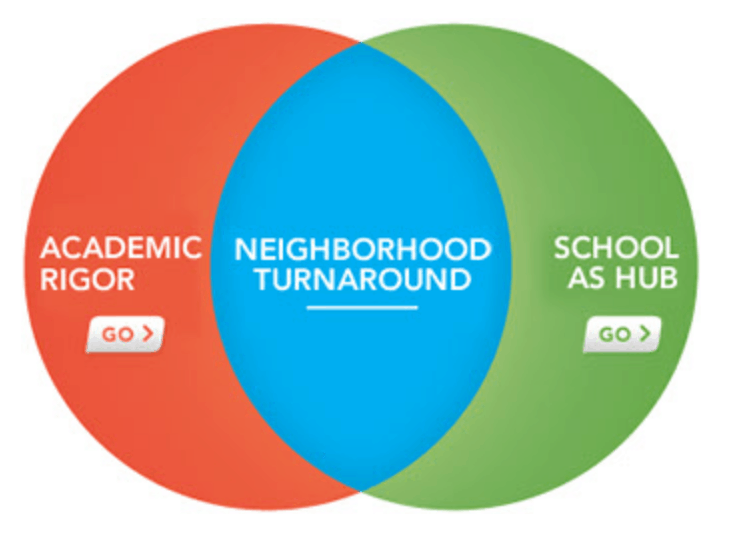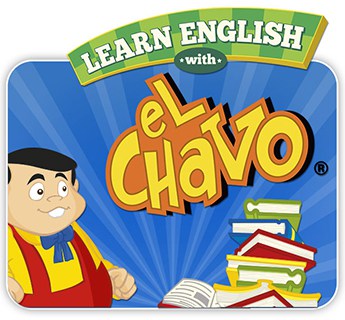Meeting the Needs of English Learners in Big LA Schools

“Our mission is to graduate every student attending an LA’s Promise neighborhood school college and career ready.” That’s the goal at LA’s Promise, a school support organization that runs three big secondary schools in Los Angeles in partnership with the district.
Here’s what makes the mission a real stretch goal: all of the 4,500 students live in or near poverty and many are new to English. At Manual Arts High School, there were 254 students new to the country on the first day of school (over 300 after a couple weeks). The come from Salvador, Guatemala, and Honduras–many arriving only days before school started, some unaccompanied.
On a fall school visit, area superintendent Cheryl Hildreth asked a class of 30 students when they had arrived in the country–they were all new in the last six months.
Despite enormous challenge, the robust turnaround model has yielded a steady increase in test scores, 96% attendance and 80% cohort graduation rate with 90% of graduates admitted to college–40% of them to four year universities. This year more than 50% of graduates will gain entrance to four year universities because students were required to apply to both two year and four year.
A focus on school climate resulted in a 90% reduction in high school suspension rates. All schools have a clinic attached or on site. A third of students access group or individual mental health therapy.
The robust school turnaround model, LA’s Promise partners with a cadre of schools committed to ensuring that students growing up in poverty receive an excellent education. The formula is neighborhood turnaround, school as hub, and academic rigor (featured image).
LA’s Promise Neighborhood is an enrollment zone that includes two large South LA high schools and one middle school operated under a performance contract with the Los Angeles Unified School District. Schools become community hubs that offer comprehensive support services for students and families–and with it a shot at a healthy and successful in life.
Executive Director Veronica Melvin said, “We spent lots of time on ELL in last year,” with the wave of unaccompanied youth on top of the long term English learners.
High school English learners receive a double block of ELA (but only one year of the developmental course counts for college entrance). LA’s Promise schools use the blended Read 180 program and like it.
Melvin noted improvement strategies including a summer bridge program, mentoring long term ELL toward fluency (i.e., reclassification), and ELL math courses with strong Spanish supports.
Unlike urban Texas schools that have adopted dual language (see recent feature on El Paso), all other courses in LA are taught in English.
Support From South of the Border
Last year LA’s Promise ELL teachers benefited from Televisa Foundation, a nonprofit affiliate of Grupo Televisa of Mexico City, the leading media group in the Spanish-speaking world. EL middle school teachers came together to review lessons, plan for the week and reflect.
LA’s Promise also used the popular Learn with Chavo app with students and parents
Executive Director Alejandro Villanueva explained that Televisa likes to leverage its media savvy talent to build and advocate for products that “propel Latino children and youth in the US through innovative education and cultural programs.”
 The Learning with Chavo series leverages a popular TV character. After Learn Spanish, Televisa released Learn Coding. Next is Launch Math, then science.
The Learning with Chavo series leverages a popular TV character. After Learn Spanish, Televisa released Learn Coding. Next is Launch Math, then science.
Villanueva would like to see an innovation fund to support ELL EdTech and take advantage of open content and new technologies (see a summary of ELL products and gaps).
Dedicated teachers, smart strategies and new tools are making a difference in some of LA’s biggest and most challenging schools.
For more information please visit the Televisa Foundation website, follow them on Twitter: @Televisafoundat and on Facebook: Televisa Foundation.
This blog is part of the Supporting English Language Learners Series with support from The Bill & Melinda Gates Foundation. For more, stay tuned for the culminating podcast, infographic and publication.
For more, see:







0 Comments
Leave a Comment
Your email address will not be published. All fields are required.